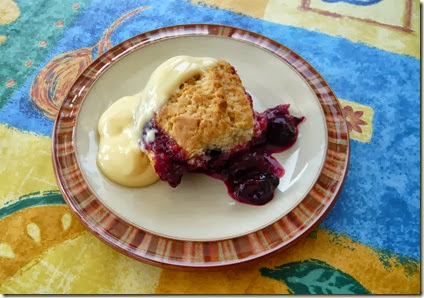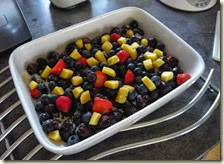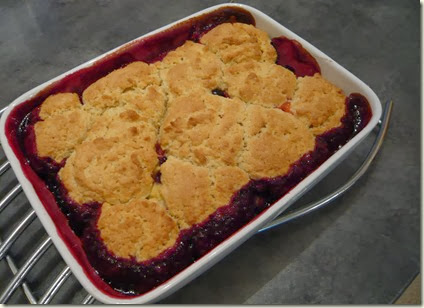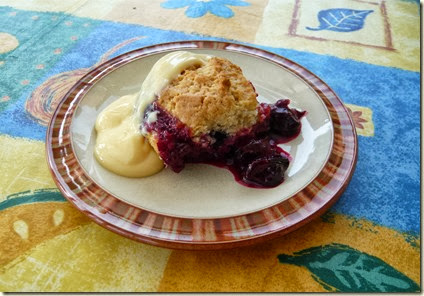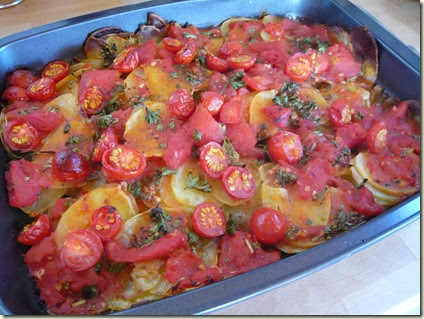There’s nothing quite like fresh home-made bread is there? The anticipation as it bakes in the oven and the aroma fills not just the kitchen but the whole house. The frustration of waiting for it to be cool enough to cut, then the joy of the first slice, spread with a thick layer of butter – then jam on top for the second slice. Heaven.
Even though everyone in the world is knocking up a loaf of bread with the ease of tying their shoe laces, I confess that I have never done it. Except in a bread making machine, which probably doesn’t count. The idea of baking anything with yeast gives me the collywobbles.
Nick however loves making bread from scratch, the old fashioned way. He finds the kneading and pummelling quite therapeutic and satisfying. I find the smell and eating very satisfying !!
So when we were chez nous last week he decided to make a simple loaf of bread and to try out the automatic bread baking programme in our French oven. Sorry, I forgot to take a picture of the oven, but it has lots of programmes and settings, including the rotisserie, which we use quite often, a cake baking programme which I fail to see how it can work, and the bread programme.
You just put your proved bread into a cold oven, turn it on and it bakes. No temperature setting or timing required, just some water in a tray in the bottom of the oven. We were both a bit sceptical, but it worked perfectly.
Nick used a basic multigrain strong flour, nothing fancy, and a sachet of fast yeast from Intermarché. He used his standard recipe which he keeps in his head, having made a basic loaf so often that he no longer needs to look at a recipe. (Which makes me feel ever so slightly inadequate as I still check the recipe before I make the chocolate cake I have been making for over thirty years !!) He mixed it using the little dough hooks on our cheap French hand mixer, left it to rise for a couple of hours, put it in the oven and 50 minutes later it was done !! And perfectly delicious.
I suppose we shouldn’t really have been sceptical, or surprised , that the bread programme worked so well. Presumably it brings the bread up to temperature slowly to give it more rise, then blasts it to bake it in the final minutes. Similar in fact to how a bread making machine works. Hey ho.
In fact it looked so easy that I might pluck up the courage and have a go myself. One day. Maybe. In any case, as home made granary bread is a real treat for tea time, I am contributing Nick’s loaf to this month’s Tea Time Treats Challenge, organised by Karen of Lavender and Lovage, and Kate of What Kate Baked. The current theme is “bread” and you can see the details here.

Obviously, to many people such a simple loaf is hardly worthy of a blog post, not to mention a baking challenge entry (especially having seen the other fabulous entries already linked in – what a lot of talented bakers there are around), but to me a home-made loaf is always a little miracle. How something that tastes so good can come from a handful of simple ingredients is, I think, pretty amazing. I don’t know why we don’t make it every time we need bread, especially when you just shove it in the oven on an automatic programme !!
The keeping properties of this loaf are quite good. It stays fresh in the bread bin for a couple of days and is very toastable after four days.
Nick’s automatic granary loaf recipe (adapted from the basic recipe in The River Cottage Handbook)
500g multigrain flour
7g dried yeast (one sachet)
10g salt
300ml warm water
25g butter
Method
Combine the flour, salt and yeast in a bowl, add the butter and water and mix with the dough hook attachment of your hand mixer for a few minutes, until the dough starts to come together.
Transfer the dough to an oiled surface and knead for five minutes. Place the dough in an oiled bowl, cover with cling film and leave at room temperature or somewhere warm for at least an hour, possibly two, by which time it should have doubled in size.
Remove the dough from the bowl, flatten to knock it back, and shape it into an oval loaf. Transfer to a baking sheet, slash the top with a sharp knife, sprinkle with a little extra flour and put it into your cold oven on the automatic bread setting. Put 500ml of water in a baking tray in the bottom of the oven.
Leave the house ~ so that you’re not tempted to stand in the kitchen, enjoying the lovely aroma, watching the oven and waiting for the alchemy to take place !!
Alternatively, if you don’t have an automatic setting, leave the dough to rise for a second time for thirty minutes then put into a hot oven, preheated to 240°C, for 5-10 minutes. Reduce the temperature to 210° and bake for a further 25-30 minutes until nicely browned.
Makes one 500g loaf.
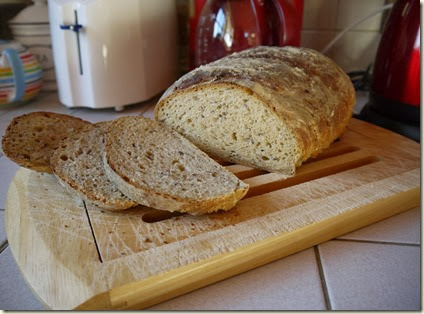
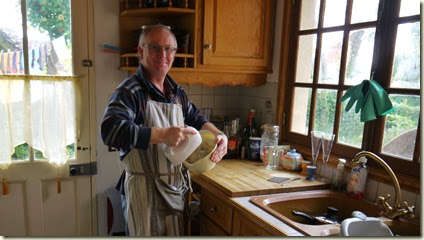

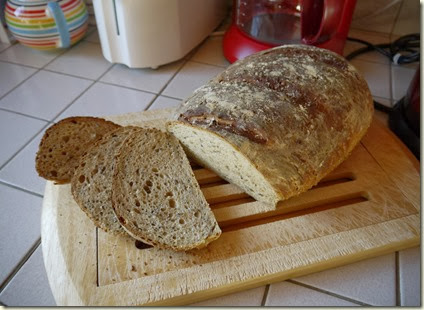

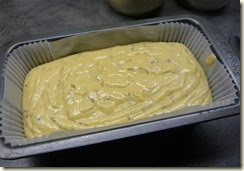
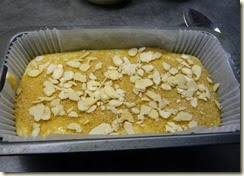


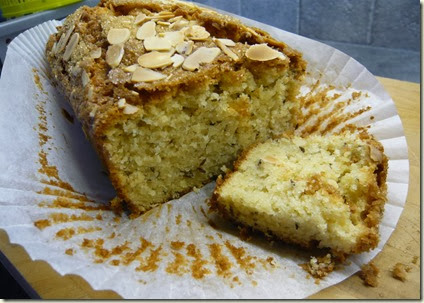

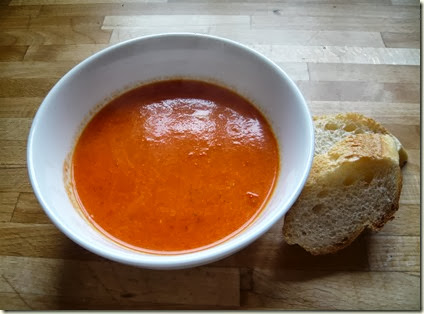
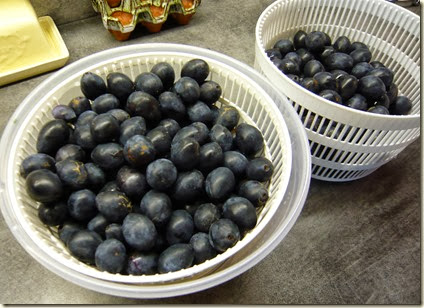 Anyway, I was looking for ideas for something to do with them other than a crumble, pie, or jam, and came across a recipe on the Good Food website. (There’s no point in my giving the link here as it’s on of the ones that disappeared from the site on 30th September.)
Anyway, I was looking for ideas for something to do with them other than a crumble, pie, or jam, and came across a recipe on the Good Food website. (There’s no point in my giving the link here as it’s on of the ones that disappeared from the site on 30th September.)